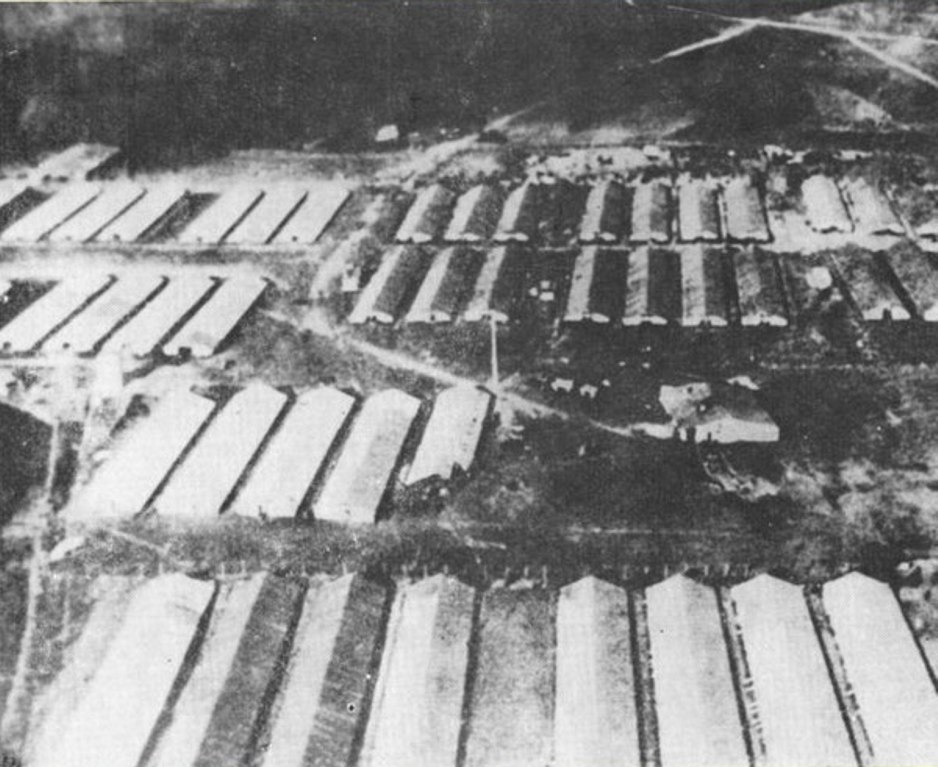|
|
Stalag IB Hohenstein In 1939, on the 25th Anniversary of the Tannenberg Battle, a rally of First World War veterans was planned on the site of Hindenburg's Mausoleum, along with a large national ceremony on that occasion. To meet the great number of unforeseen guests comprising of politicians and nationals etc., a number of low, wooden buildings were built in the fields near Królikowo place, behind the walls of the Monument, to accommodate them. The outbreak of the Second World War hindered, and practically destroyed all of these previously laid plans and enterprises however. As soon as the first days of September arrived, after the start of the war, the wooden barracks were used to accommodate Polish POWs. And in this way, a camp of war prisoners Stalag IB Hohenstein – the largest in East Prussia and one of the largest in Eastern Europe – was created. Its area of 35 hectares contained more than 120 barracks. While among the prisoners there were Poles, Belgians, French, Italians, Russians, and Serbs; each national group being isolated from each other. It is estimated that altogether about 650 hundred thousand POWs were kept here during the war. About 60 thousand of them dying in the camp as a result of exhaustion, hunger, diseases and maltreatment. Their bodies, numbering 55 thousand, being buried at the cemetery in Sudwa in more than 500 graves. Today, the memory of these people is celebrated by a monument designed by Ryszard Wachowski. On 19 January 1945, Russian planes partially demolished the area around the camp, and on the next day a hasty evacuation of POWs by Red-Army soldiers began. On Stalin's orders, in accordance with which each POW was a traitor, the majority of them were then forced to march to Russian camps in Siberia. After war operations ceased and the area of Varmia was taken over by the Polish government, the people in the vicinity began to dismantle the camp and barracks to salvage the building materials necessary to repair their own damaged houses and farm buildings. As a result of this, within a few years all of the barracks were dismantled and the material taken away, the wire and poles of the fencing being used by farmers to enclose their own pastures, which led up to the terrain of the former camp. In the end, however, most of the material was sent to Warsaw by trains. Thanks to this, cottages appeared in the area of Jelonki (Warsaw) which are still standing today. At the time they were first built, the cottages were inhabited by workmen building the Palace of Culture and Science, and next students. Mostly however, today, traces of the huge Stalag IB Hohenstein are extremely scarce. Since 1980, an exhibition of camp documents and keepsakes has been on show in Olsztynek. In 2011, during work on the building of the S7 express road traces of the former POW camp were discovered in the area of Królikowo village. Archaeological work in an area covering 473 ares finishing at the end of 2011. Simultaneously, the authorities of the Town of Olsztynek announced an open competition for "A Concept for the Commemoration of the Victims of IB Hohenstein Stalag in Królikowo". And, as one can learn from the statue, "the goal of the competition is to find the best artistic concept for a suitable form of commemoration of the victims of one of the largest POW camps, as well as the creation of a suitable spatial and functional solution". Translated by Marzena Beata Guzowska
1
2
|

Photo from the collection of Sławomir Nieciecki Polish POWs in Stalag IB Hohenstein, 1939. 
The Stalag IB Hohenstein visible in the background. 
Photo from the collection of Sławomir Nieciecki An interior of a barrack of POWs in Stalag IB Hohenstein. |
|||
| |||||
